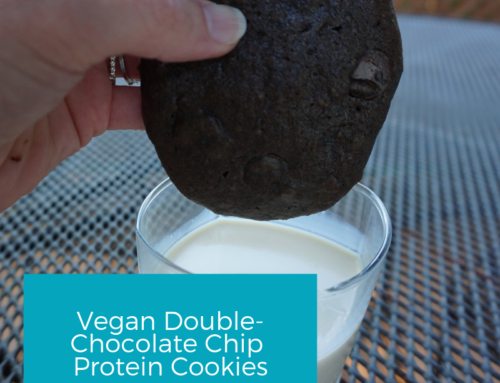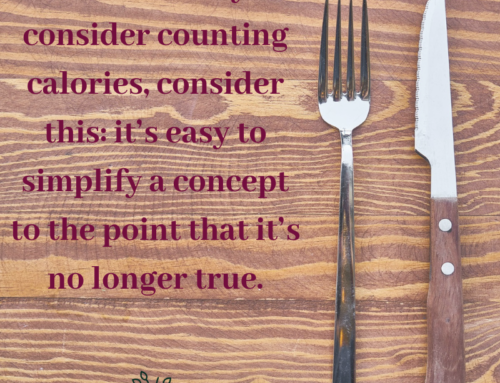Let’s talk about the different types of fiber in our foods. It’s a less glamorous nutrient. Yet, fiber has so many benefits that it deserves the spotlight. Let’s explore why dietary fiber and functional fiber help everyday athletes stay healthy.
What is fiber?
There are two types of fiber, dietary fiber and functional fiber. Dietary fiber includes nondigestible carbohydrates that are intact and naturally found in plants. Functional fiber includes nondigestible carbohydrates that have been isolated, extracted, or manufactured. They have been shown to have health benefits to you and me.
Within functional fiber, there are soluble and insoluble fibers. Being soluble or insoluble refers to if it is dissolves in water or not. The ones that dissolve in hot water are considered soluble. The ones that don’t, are considered insoluble. Soluble fibers generally delay food from being emptied from the stomach, slow down the food in the intestines, and decrease absorption. Insoluble fibers tend to speed up the time it takes for substances to move through the intestines and increase the bulk of feces. Both types of fiber provide you with health benefits.
Fibers listed on food labels refer to functional fibers.
| Dietary Fibers | Functional Fibers |
| Cellulose | Cellulose |
| Hemicellulose | Pectin |
| Pectin | Lignin |
| Lignin | Gums |
| Gums | B-glucans |
| B-glucans | Fructans |
| Fructans | Polydextrose and polyols |
| Resistant starches | Psyllium |
| Resistant dextrins | |
| Resistant starches |
Fiber and Plants
Consuming plant foods provides you with fiber. The plant species, the part of the plant, and the plant’s maturity all influence the composition and the type of fiber that you are getting. You can also see that some fibers are considered both a functional and a dietary fiber depending on how it is included in the food. The plant wall is where most of the fiber is houses within a plant.
| Type of Fiber | Examples of Food Sources |
| Cellulose | All plant foods, especially wheat bran, legumes, nuts, peas, root vegetables, vegetables of the cabbage family, celery, broccoli, coverings of seeds, and apples |
| Hemicellulose | Whole grains, especially bran, nuts, and legumes |
| Lignin | Whole grains, especially wheat bran, root vegetables, fruits with edible seeds, broccoli (especially the stalk) |
| Pectin | Citrus fruits, strawberries, apples, raspberries, legumes, nuts, some vegetables, oats |
| Gums | Oatmeal, barley, and legumes |
| B-glucans | Oats, barley, mushrooms |
| Resistant Starches | Grains, seeds, bananas (more-green), legumes, potato, rice, pasta |
| Fructans | Chicory, asparagus, onion, garlic, artichoke, tomatoes, bananas, rye, and barley |
| Chitosan, chitin | Shells of crabs, shrimp, lobster |
Health Claims of Functional and Dietary Fiber
The Food and Drug Administration (FDA) has approved several health claims for fiber. Diets rich in fiber can lower total risk of death from cardiovascular, infectious, and respiratory diseases. That’s a big statement but it’s been supported by numerous studies. Research identified consuming fiber, both insoluble and soluble, can decrease cholesterol and help reduce blood pressure. Research has also shown that the viscous gels that are formed with the ingestion of fibers helps manage symptoms of diabetes.
One of the reasons I don’t agree with low-carbohydrate diets is because individuals on these diets are often not consuming enough fiber. Which, is counter-productive because if you are trying to lose weight, fiber has been shown to help you lose and manage weight. Fiber-rich foods help keep you full longer, reduce hunger, and help manage digestion. Some studies have shown those that individuals who consume more fiber lose more body fat and reduced waist circumference than those who did not consume recommended amounts of fiber.
When you don’t consume enough fiber, your risk for gastrointestinal disorders or issues rises. Diverticular disease, constipation, and colon cancer are highly associated with lower intakes of fiber. The ability of insoluble fiber to help increase stool weight, as well as its ability to speed up transit time in your intestines helps manage gastrointestinal disorders.
Recommendations
The Dietary Guidelines recommend an average of 14 g of fiber per 1,000 kcals. The chart below provides a more specific breakdown of guidelines per total day.
| Group | Age (years) | Total Fiber Recommendations |
| Men | 19 to 50 | 38 |
| > 50 | 31 | |
| Women
|
19 to 50 | 25 |
| > 50 | 21 | |
| Children
|
1 to 3 | 19 |
| 4 to 8 | 25 | |
| Girls | 9 to 18 | 26 |
| Boys
|
9 to 13 | 31 |
| 14 to 18 | 38 |
Most Americans consume about 15 g of fiber per day, which is below the recommendations for adults and children. If you want to try to increase your fiber intake, here’s a chart that shows foods high in fiber.
| Food | Total g
of fiber |
Food | Total g
of fiber |
| Apple with skin | 2.70 | Banana | 1.79 |
| Broccoli | 4.66 | Carrots | 3.87 |
| Cauliflower | 4.20 | Pear with skin | 3.16 |
| Black beans | 8.7 | Kidney beans | 7.13 |
| Navy beans | 10.5 | Pinto beans | 6.65 |
| Almonds | 12.3 | Pecans | 9.6 |
| Peanuts | 8.1 | Walnuts | 6.7 |
| Oatmeal | 2.1 | All bran cereal | 29.3 |
| Raisin bran | 11.1 | Couscous | 2.8 |
| Whole grain bread | 6.8 | Cheerios | 10 |
[Tweet “Let’s talk about fiber! And all the foods that have it. “]






This is such great information and helped me a lot, especially with the breakdown of which foods have great fiber! I am working on getting more fiber into my diet and will make sure to revisit these charts for a reminder. THANKS!
I think you probably meant that fiber keeps you full longer, but it is also true that it keeps you FUN longer too!
ha!ha! I guess that’s what my mind was thinking when I wrote this. Good catch, Julia!